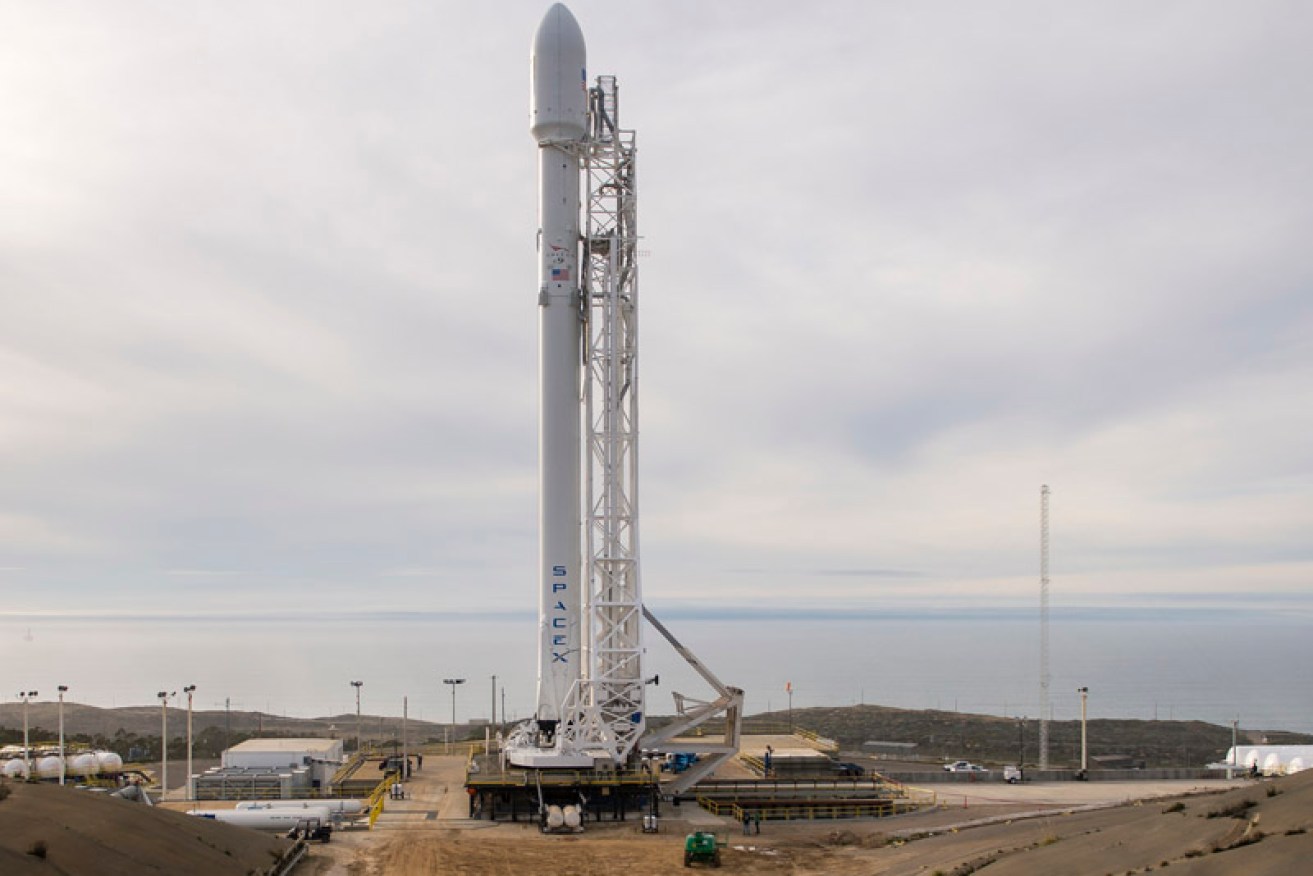Space rocket launch fails for third time


Getty
SpaceX was unable to land its Falcon 9 rocket after putting a climate-monitoring satellite into orbit, failing in its bid to recycle rockets.
The rocket blasted off from Vandenberg Air Force Base in California on Sunday night (AEST) and successfully placed the $180-million satellite, Jason-3, into orbit.
But, SpaceX, the company led by internet and business magnate Elon Musk, said after the landing on Monday morning (AEST) that it was disappointed because it wanted to reuse the parts to enable more sustainable and cheaper spaceflights in the future.
• SpaceX rocket successfully returns to Earth
• Polish up your CV … NASA is hiring new astronauts
• Space station resupply goes terribly wrong
A broken landing leg was said to be the culprit to then failed landing.
A commentator during the live web cam said: “Unfortunately we are not standing upright on the drone ship at the moment but the good news here is that the primary mission is still on track.”
SpaceX said no images of the final leg of the trip were available because the live video link was disrupted before the rocket landed, the Nine Network reported.
“First stage on target at droneship but looks like hard landing; broke landing leg,” SpaceX posted during the flight on Twitter.

SpaceX failed an ocean landing attempt after a successful lift-off. Photo: Twitter
A successful ocean landing would have marked a second milestone for SpaceX, one month after it nailed a spaceflight first with a successful ground landing in Florida, a key step in Mr Musk’s quest to develop a cheap, reusable rocket.
The company’s two previous ocean-landing attempts in 2015 were also unsuccessful.
Being able to land at sea would give the company flexibility to recover rockets used on more demanding missions, such as launching heavy satellites, when boosters do not have enough fuel left to reach land.
However, the SpaceX launch succeeded in sending the US-and European-owned Jason-3 satellite into orbit.
The 550kg Jason-3 satellite was the fourth in a series of ocean-monitoring satellites, which were taking centre stage in monitoring Earth’s climate.
“More than 90 per cent of all the heat being trapped in the Earth’s system … is actually going into the ocean,” the National Oceanic and Atmospheric Administration Jason-3 lead scientist Laury Miller said.
“This makes the ocean perhaps the biggest player in the climate change story.”
NOAA is one of five agencies partnering on the $US180 million ($A263 million), five-year Jason-3 program.
Once in position 1336km above Earth, Jason-3 will bounce radio waves off the ocean and time how long it takes the reflected signals to return.
Definitely harder to land on a ship. Similar to an aircraft carrier vs land: much smaller target area, that’s also translating & rotating.
— Elon Musk (@elonmusk) January 17, 2016
However, that was not what prevented it being good. Touchdown speed was ok, but a leg lockout didn’t latch, so it tipped over after landing.
— Elon Musk (@elonmusk) January 17, 2016
Well, at least the pieces were bigger this time! Won’t be last RUD, but am optimistic about upcoming ship landing. pic.twitter.com/w007TccANJ
— Elon Musk (@elonmusk) January 17, 2016
– with AAP








